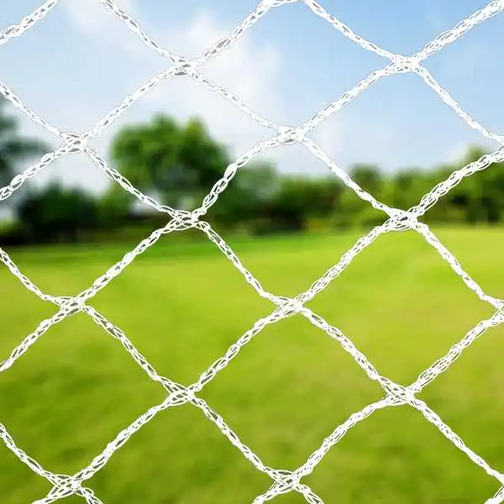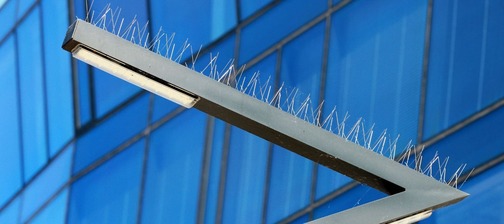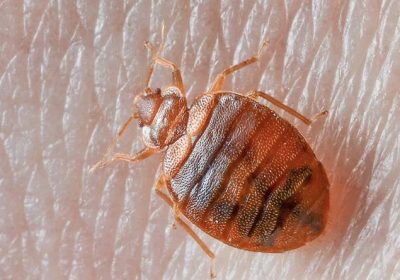Comparing Bird Netting with Other Bird Control Methods: Pros and Cons
Birds are a beautiful part of nature, often filling the air with song and adding life to our surroundings. However, they can also become a nuisance, particularly when they invade areas where they are not welcome. Imagine trying to enjoy a quiet evening on your patio only to be disturbed by flocks of birds or finding your carefully tended crops damaged by feathered intruders. This is where bird control comes into play.
Choosing the right bird control method is crucial, not just for effectiveness, but also for ensuring that the solution is humane and environmentally friendly. This article aims to compare bird netting with other bird control methods, examining the pros and cons of each to help you make an informed decision.
Bird Netting
Bird netting is a popular method for controlling birds in various environments, from agricultural fields to urban buildings. But what exactly is bird netting and how does it work?

Description of Bird Netting Bird netting involves the use of mesh nets to create a physical barrier that prevents birds from accessing specific areas. These nets can be installed over crops, around buildings, or across any area where bird intrusion is a problem.
How It Works The principle behind bird netting is simple: it denies birds access to areas where they are not wanted. The nets are made from durable materials and come in various mesh sizes to block different types of birds, from small sparrows to larger pigeons and seagulls.
Types of Bird Netting Materials
- Polyethylene: This is a common material for bird netting due to its high durability and resistance to UV rays. It is suitable for outdoor use and can last for several years.
- Polypropylene: Known for its lightweight and flexibility, polypropylene netting is easy to handle and install. It is also resistant to chemicals and moisture.
- Nylon: Nylon bird netting is strong and durable, making it ideal for areas with heavy bird pressure. It is also UV resistant and can withstand harsh weather conditions.
Installation Methods Bird netting can be installed in various ways depending on the area to be protected. Common methods include draping the netting over structures, attaching it to poles or frameworks, and using tensioned cables to support the net. Proper installation is crucial to ensure the netting is effective and durable.
Pros of Bird Netting
- High Effectiveness in Preventing Bird Access Bird netting provides a physical barrier that is difficult for birds to penetrate, making it highly effective in keeping them out of protected areas.
- Durability and Long Lifespan When properly installed and maintained, bird netting can last for many years, providing a long-term solution to bird problems.
- Low Maintenance Requirements Once installed, bird netting requires minimal maintenance. Regular inspections to check for damage or wear are usually sufficient.
- Humane and Non-lethal Bird netting is a humane method of bird control as it does not harm the birds. It simply prevents them from accessing certain areas.
- Versatility for Various Applications Bird netting can be used in a variety of settings, including agriculture, buildings, and fisheries. Its flexibility and adaptability make it a versatile option for different environments.
Cons of Bird Netting
- Initial Cost of Installation The cost of purchasing and installing bird netting can be high, especially for large areas. However, this can be offset by its long lifespan and effectiveness.
- Potential for Damage if Not Maintained While bird netting is durable, it can be damaged by weather, animals, or vandalism if not regularly inspected and maintained.
- Aesthetic Concerns Bird netting can be visually unappealing, especially in residential or commercial settings where appearance is important.
- Possible Obstruction of Maintenance Activities In some cases, bird netting can obstruct maintenance activities, making it difficult to access certain areas for cleaning or repairs.
- Risk of Trapping Non-target Species There is a risk that non-target species, such as small mammals or other wildlife, could become entangled in the netting.
Other Bird Control Methods
While bird netting is an effective solution, it is not the only option available. Here are some other bird control methods and their pros and cons:
Visual Deterrents
Types: Scarecrows, reflective tape, predator decoys.
Pros: Visual deterrents are cost-effective and easy to implement. They can quickly be set up in problem areas.
Cons: Birds can become habituated to these deterrents, reducing their effectiveness over time. They often need to be moved or changed regularly to remain effective.
Auditory Deterrents
Types: Distress calls, sonic devices, ultrasonic devices.
Pros: These deterrents can cover large areas and have adjustable settings to target specific bird species.
Cons: Noise pollution can be a significant drawback, especially in residential areas. Additionally, birds may eventually become accustomed to the sounds, reducing effectiveness.
Chemical Repellents
Types: Taste aversions, gels, sprays.
Pros: Chemical repellents offer immediate effects and are easy to apply.
Cons: They often require frequent reapplication and can have environmental impacts, potentially affecting non-target species.
Physical Barriers

Types: Spikes, electric tracks, wires.
Pros: Physical barriers are highly effective in preventing birds from landing or roosting in specific areas and are generally long-lasting.
Cons: Installation can be complex, and these barriers often require regular maintenance to remain effective.
Biological Control
Types: Trained predatory birds, natural predators.
Pros: Biological control methods are eco-friendly and can be effective over large areas.
Cons: These methods depend on predator behavior, which can be unpredictable. There are also potential legal and ethical concerns involved.
Comparative Analysis
Effectiveness Bird netting is highly effective in preventing bird access, whereas other methods may have variable effectiveness depending on bird habituation and environmental conditions.
Cost Initial costs for bird netting can be high, but it is a long-term solution. Other methods like visual and auditory deterrents might be cheaper initially but could incur higher ongoing costs.
Maintenance Bird netting requires minimal maintenance once installed. Other methods, especially chemical repellents and physical barriers, need more frequent upkeep.
Environmental Impact Bird netting is environmentally friendly as it is non-lethal and does not involve chemicals. Chemical repellents, on the other hand, can have significant environmental impacts.
Humaneness Bird netting is humane as it does not harm the birds, whereas some physical barriers and chemical repellents can be harmful.
Versatility and Application Contexts Bird netting is versatile and can be used in various settings, from agriculture to urban areas. Other methods might be more suited to specific situations and less adaptable.
Case Studies/Examples
- Agricultural Implementation of Bird Netting In vineyards, bird netting is commonly used to protect grapes from birds. Studies have shown that netting can significantly reduce crop losses, making it a cost-effective solution over time.
- Effective Use of Visual and Auditory Deterrents in Urban Areas Cities like San Francisco have successfully used visual and auditory deterrents to manage pigeon populations around historic buildings and public spaces. Regularly changing the types of deterrents used helps maintain their effectiveness.
- Combined Methods in Fisheries and Commercial Buildings Fisheries often use a combination of bird netting and auditory deterrents to protect fish stocks. Similarly, commercial buildings may combine netting with spikes or electric tracks to keep birds from nesting in unwanted areas.
Conclusion
Bird control is a significant issue that requires thoughtful consideration of various methods. Bird netting stands out for its high effectiveness, durability, and humane approach, making it a preferred choice for many applications. However, other methods like visual and auditory deterrents, chemical repellents, physical barriers, and biological controls also have their place depending on the specific context and needs.
When choosing a bird control method, it’s essential to consider factors like effectiveness, cost, maintenance, environmental impact, and humaneness. By understanding the pros and cons of each method, you can select the best solution for your specific situation.
FAQs
Q1: What is the most effective bird control method? A1: The effectiveness of bird control methods varies. Bird netting is often considered highly effective due to its ability to physically block birds, but the best method depends on the specific context and bird species.
Q2: Is bird netting humane? A2: Yes, bird netting is humane as it prevents birds from accessing certain areas without harming them.
Q3: Can bird netting be used in urban areas? A3: Absolutely. Bird netting is versatile and can be installed on buildings, balconies, and other urban structures to prevent birds from nesting or roosting.
Q4: How often do chemical repellents need to be reapplied? A4: The frequency of reapplication depends on the type of repellent and environmental conditions. Generally, chemical repellents need to be reapplied every few weeks or after rain.
Q5: What are the environmental impacts of bird netting? A5: Bird netting has minimal environmental impact as it does not involve chemicals or harm birds. However, there is a risk of trapping non-target species if not properly installed.
Read more about Bird Netting
- Choosing the Right Bird Netting: A Comprehensive Guide
- Choosing the Right Bird Netting Material: A Comprehensive Guide
- Installation Techniques for Bird Netting: Step-by-Step Instructions
- The Environmental Impact of Bird Netting: Balancing Wildlife Protection and Human Needs
- Top Benefits of Using Bird Netting in Agriculture and Horticulture
- Common Mistakes to Avoid When Installing Bird Netting
- Innovative Bird Netting Solutions for Urban Areas
- The Legal Aspects of Bird Netting in Australia: Regulations and Best Practices
- Maintenance and Longevity of Bird Netting: Keeping Your Netting Effective









